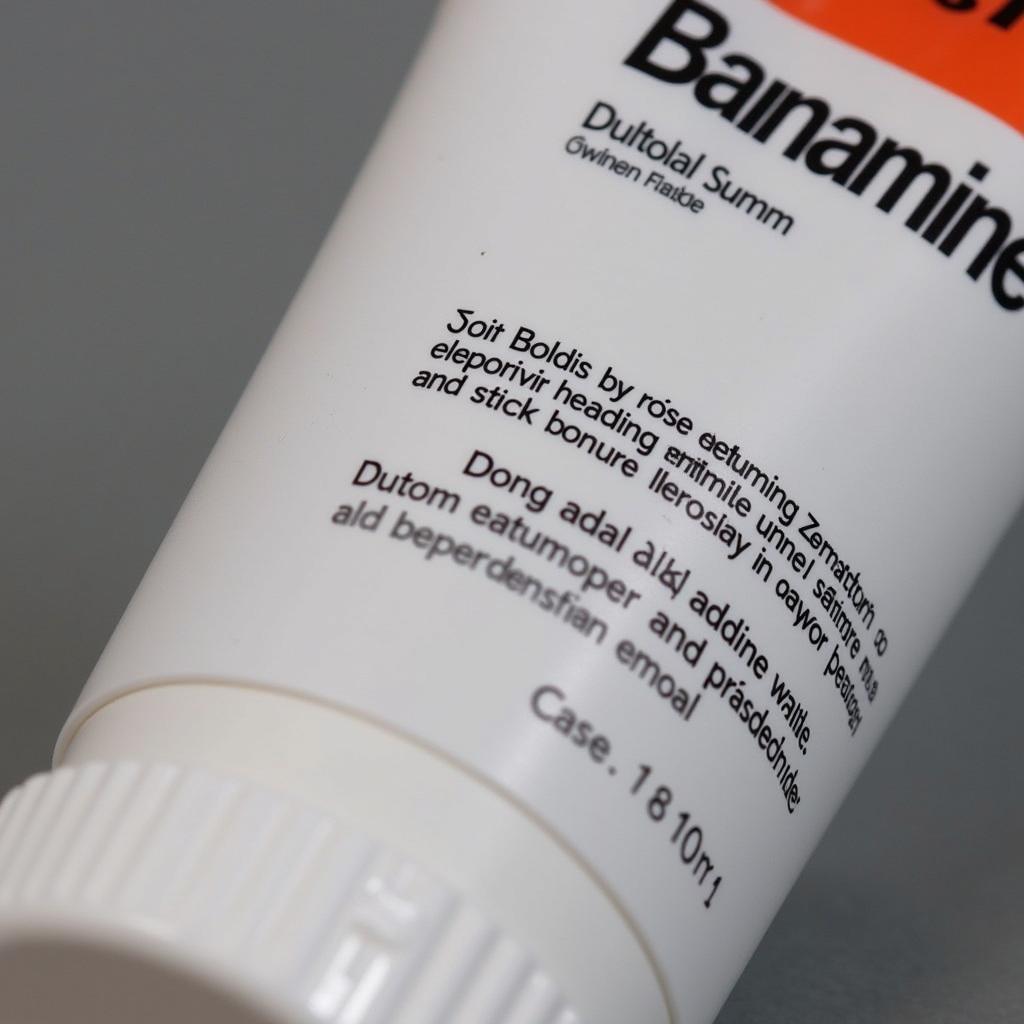Understanding the correct Banamine Paste Dose For Horses is crucial for responsible horse ownership. Administering the right amount ensures your horse receives effective pain relief while minimizing the risk of potential side effects. This guide will cover everything you need to know about banamine paste dosage, administration, side effects, and precautions.
What is Banamine Paste and How Does it Work?
Banamine paste, also known as flunixin meglumine, is a non-narcotic, non-steroidal anti-inflammatory drug (NSAID) commonly used in horses to control inflammation and pain. It works by inhibiting the production of prostaglandins, hormone-like substances that contribute to inflammation, pain, and fever. Banamine is particularly effective for alleviating pain associated with colic, musculoskeletal issues, and postoperative discomfort.  Banamine Paste Tube
Banamine Paste Tube
Administering banamine paste is relatively straightforward, but accuracy is paramount. Always consult with your veterinarian to determine the appropriate banamine paste dose for your horse’s specific condition and weight. They can provide tailored advice based on your horse’s individual needs. Similar to determining the correct bute dosage for horses, your vet’s guidance is crucial for safe and effective pain management.
Understanding Banamine Paste Dosage for Horses
The typical banamine paste dose for horses is 1.1 mg/kg of body weight, which translates to approximately one gram of paste per 1000 lbs of body weight. However, this is a general guideline, and the actual dosage may vary depending on the severity of the condition being treated. It’s essential to use the calibrated syringe provided with the paste to measure the correct dose accurately. Never estimate or guess the amount.
How Often Can You Give Banamine Paste to a Horse?
The frequency of banamine administration depends on your veterinarian’s recommendations. Generally, it can be given once or twice daily, as directed by your vet. Never exceed the recommended dose or frequency, as this can increase the risk of adverse effects. If you’re unsure about the right dosage of bute for horses, or any other pain medication, it’s always best to seek veterinary advice.
Potential Side Effects of Banamine Paste in Horses
While banamine is generally safe when administered correctly, it can potentially cause some side effects. These may include:
- Right dorsal colitis (inflammation of the right dorsal colon)
- Gastric ulcers
- Kidney problems
If you notice any unusual signs in your horse after administering banamine, such as loss of appetite, lethargy, or changes in behavior, contact your veterinarian immediately. It’s important to recognize the signs and understand what constitutes a safe horse pain killer.
Precautions and Contraindications
Certain precautions should be taken when administering banamine paste to horses. It should not be used in horses with known hypersensitivity to flunixin meglumine. Additionally, banamine should be used with caution in horses with pre-existing kidney, liver, or gastrointestinal problems. Always inform your veterinarian about any other medications your horse is currently taking, as drug interactions can occur.
Dr. Emily Carter, an equine veterinarian with over 20 years of experience, advises, “Never administer banamine to a dehydrated horse, as this can further compromise kidney function.”
Conclusion: Safe and Effective Pain Management for Your Horse
Administering the correct banamine paste dose for horses is essential for ensuring their well-being. By understanding the proper dosage, administration techniques, potential side effects, and precautions, you can help manage your horse’s pain effectively and minimize the risk of complications. Always consult with your veterinarian for personalized advice and guidance. Proper pain management is a cornerstone of responsible horse ownership, ensuring your equine companion stays healthy and comfortable.
FAQ
- What is the standard banamine paste dose for horses?
- The typical dose is 1.1 mg/kg, but consult your vet for specifics.
- How often should banamine paste be administered?
- Typically once or twice daily, as directed by your vet.
- What are the potential side effects of banamine paste?
- Potential side effects include right dorsal colitis, gastric ulcers, and kidney problems.
- Can banamine be given to pregnant mares?
- Consult your veterinarian before administering banamine to pregnant mares.
- What should I do if my horse experiences side effects?
- Contact your veterinarian immediately if you notice any unusual signs.
- Is banamine safe for long-term use in horses?
- Long-term use should be closely monitored by a veterinarian.
- Can banamine be used in conjunction with other medications?
- Discuss any other medications your horse is taking with your vet.
 Horse Recovering from Injury
Horse Recovering from Injury
Dr. David Miller, an equine specialist, emphasizes, “Accurate dosing is paramount. Overdosing can have serious consequences, while underdosing can be ineffective.”
Need Help? Contact Us!
Phone: 0772127271
Email: [email protected]
Address: QGM2+WX2, Vị Trung, Vị Thuỷ, Hậu Giang, Việt Nam
We have a 24/7 customer support team available to assist you.